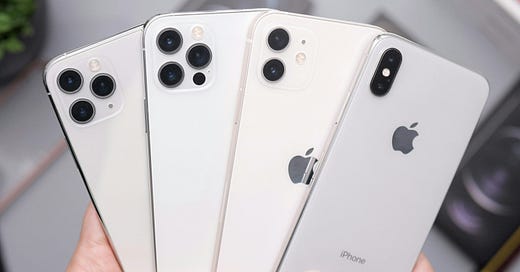DRC accuses Apple of using conflict minerals, Saudi's Neom project reportedly gets scaled back and mass market luxury loses consumer interest
April 2024
Hello and welcome!👋
Greetings from Hong Kong! I’ve recently relocated to the city, a place that I called home a few years ago. It’s exciting to have a second shot at life in the 852.
As always, your likes, comments and feedback on the newsletter are greatly appreciated.
SUPPLY CHAIN CONTROVERSY
The Democratic Republic of Congo is questioning Apple about its knowledge of so-called “blood minerals” in supply chains. Lawyers representing the central African country are demanding answers from CEO Tim Cook on the potential sourcing of raw materials from a conflict zone.
DR Congo’s resource-rich eastern region is a violent battleground between state forces, armed rebels and the M23 militia. The latter is allegedly supported by neighbouring Rwanda - a charge President Kagame’s government denies.
The lawyers involved in the discussions with Apple say the US tech giant benefits from “3T” minerals (tin, tungsten and tantalum), that are extracted in Eastern Congo and illegally smuggled out by M23 fighters. These metals are critical components of smartphones and modern gadgets.
The dispute puts the spotlight on the supply chains of mega corporations, especially those reliant on resources found in troubled or corrupt territories.
Apple maintains it’s committed to environmental and social responsibility, adding that due diligence efforts show “no reasonable basis” for DR Congo’s accusations. The California company has two weeks left to formally respond to the lawyers’ queries.
SAUDI’S NEOM: EXPECTATIONS VS REALITY
Backed by one of the world’s largest sovereign wealth funds, Saudi Arabia’s Neom is a colossal project and a key pillar of the kingdom’s Vision 2030 plan to diversify the economy away from fossil fuels.
Designs for the futuristic urban expanse, located in the country’s northwest, made a huge splash when they were first revealed. The government in Riyadh promised sci-fi style city living in The Line and a ski resort in the mountains called Trojena, among other daring developments.
But despite Saudi Arabia’s deep pockets and self-confidence, it seems the predictions for Neom were too ambitious. According to what sources have told Bloomberg, officials are paring down expectations and pushing deadlines. For instance, contractors anticipate completing only 2.4 km of The Line’s original 170 km length by 2030.
Furthermore, there are murmurs that some of the Saudi elite are alarmed by Neom’s ballooning costs. While the Public Investment Fund (PIF) is paying for the bulk of these “gigaprojects”, the emphasis is now shifting towards foreign capital. In April, Team Neom organised a roadshow to tap investors in mainland China and Hong Kong for funds and to encourage professional collaboration.
Saudi Arabia also invited a cadre of international financiers to tour the construction sites rather than rely on glossy virtual renderings. “Neom is open for business and we welcome all interested parties to be part of our continued success,” said CEO Nadhmi Al-Nasr.
DIFFERING FORTUNES FOR FASHION HOUSES
The luxury fashion sector is full of extremes at the moment. Chanel has once again hiked the prices of its classic flap bags, with the medium model currently retailing for US$10,800. But at the other end of the spectrum, premium brands such as Balenciaga, Dior and Louis Vuitton reported slower sales in the January to March quarter.
French group Kering, which owns Gucci and Yves Saint Laurent, said its “performance worsened considerably” and warned that profits would drop by as much as 45% in the first half of 2024. Powerhouse LVMH saw noticeable decreases in demand for its watches and jewellery, while revenue growth in its handbag and clothing divisions cooled.
A major factor here is Asian - particularly Chinese - consumers tightening the purse strings. However, that doesn’t give the complete picture. Although shoppers aren’t swiping their credit cards as freely as before, they’re still spending, just more selectively.
Mass market luxury is out, classic high-end products are in. This is why Hermès, Brunello Cucinelli and Prada are thriving. Analysts says people are focusing on aspirational and elite brands, which offer attractive resale value.
Thanks for reading! Take care and stay curious, Sara x





